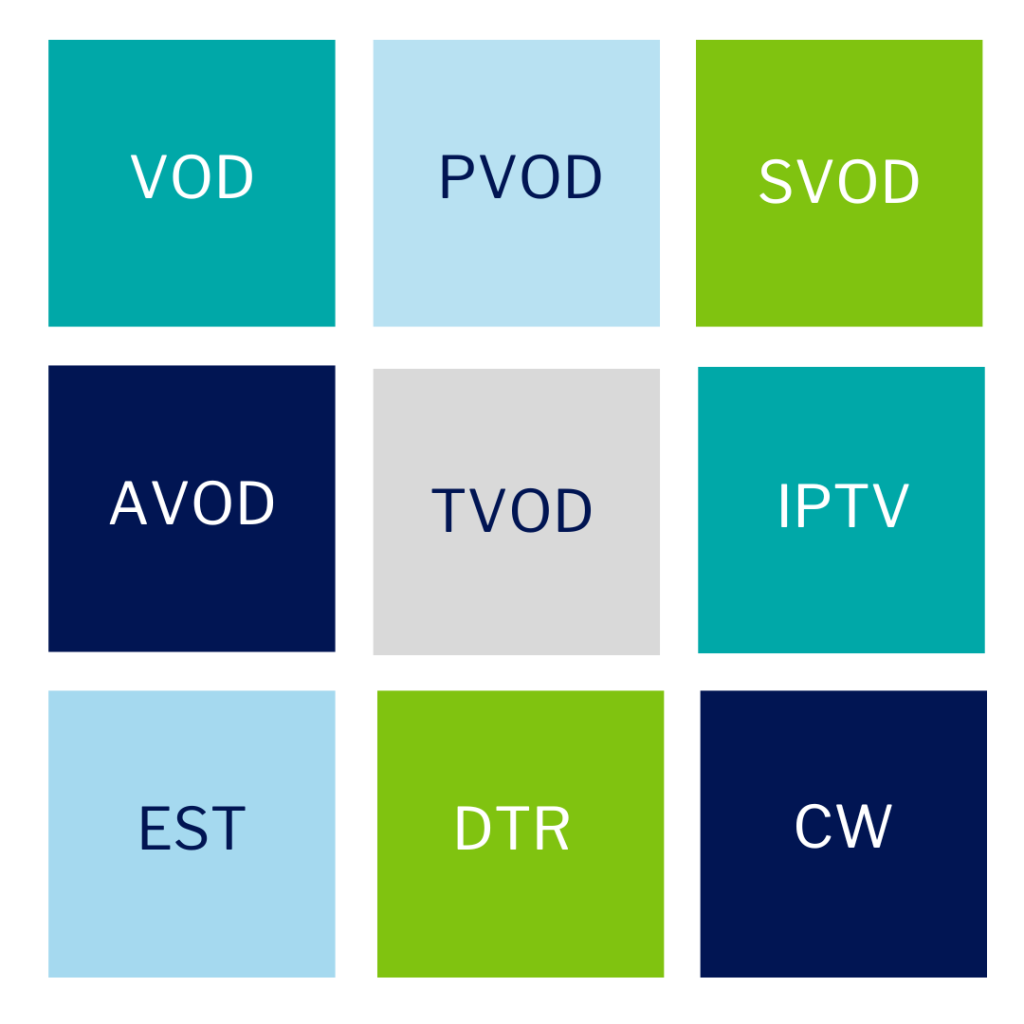 Professional video is a rapidly evolving sector, with a wide range of technical terms and acronyms used to describe the different ways in which audiovisual content is distributed, consumed and monetized. These acronyms can sometimes lead to confusion and even misinterpretation, especially if you don’t come from this field!
Professional video is a rapidly evolving sector, with a wide range of technical terms and acronyms used to describe the different ways in which audiovisual content is distributed, consumed and monetized. These acronyms can sometimes lead to confusion and even misinterpretation, especially if you don’t come from this field!
That’s why it’s important to know and understand them, so you can better grasp the challenges and opportunities facing the industry, which is undergoing rapid change with the rise of digital technology and streaming.
Here are some of the most common acronyms used in professional video. Do you know them all?
VOD: Video On Demand
This is an on-demand distribution method that allows users to rent or buy films or series on a pay-per-view basis. VOD is often offered by TV channels, telecom operators or content distributors.
Examples: Canal VOD, Orange VOD, TF1 VOD, etc.
PVOD: Premium Video On Demand
This is an on-demand distribution method that allows users to rent or buy films or series on a pay-per-view basis. VOD is often offered by TV channels, telecom operators or content distributors. Examples: Canal VOD, Orange VOD, TF1 VOD, etc.
PVOD: Premium Video On Demand
This is an on-demand distribution method that enables users to rent or buy recent films or series, often exclusively or as previews, at a higher price than conventional VOD. PVOD is often used as an alternative to theatrical release, particularly in times of health crisis.
For example, Disney+ offers some of its films on PVOD, such as Mulan and Raya and the Last Dragon.
SVOD : Subscription Video On Demand
SVOD is an on-demand service that gives users access to an unlimited catalog of films, series, documentaries, etc., for a monthly or annual subscription fee. SVOD is the dominant model for streaming platforms, which offer original or licensed content.
Examples of SVOD platforms: Netflix, Amazon Prime Video, Hulu, etc.
AVOD: Advertising Video On Demand
This is an on-demand distribution method that gives users free access to audiovisual content, financed by advertising. AVOD is often used as a means of building user loyalty, generating advertising revenue, or promoting paid-for content.
Examples: YouTube, Pluto TV, etc.
TVOD: Transactional Video On Demand
This is an on-demand distribution method that allows users to rent or buy audiovisual content by the unit, without a subscription. Content can be purchased on a permanent basis, known as EST (Electronic Sell Through), or rented for a fixed period, known as DTR (Download To Rent). TVOD is a generic term, encompassing VOD and PVOD.
Examples: iTunes, Google Play, Microsoft Store, etc.
OTT : Over The Top.
This is a broadcasting method that uses the Internet Protocol (IP) to transmit live or on-demand audiovisual content via an open network, without going through telecoms operators or content distributors. OTT makes it possible to offer content à la carte, without commitment, and accessible on all screens. OTT is often used by streaming platforms, which compete with traditional television players.
Examples include Netflix, Amazon Prime Video, Disney+, etc.
EST: Electronic Sell Through
Distribution method that enables users to purchase audiovisual content individually, without subscription, and keep it permanently. EST is often used for recent content that is not available for rental.
DTR: Download To Rent
DTR is an on-demand delivery method that allows users to rent audiovisual content by the unit, without a subscription, and download it to their device for offline viewing. DTR is often used for content that requires a high-quality Internet connection, or for users who want to optimize their data consumption.
CW: Content Windowing
This is a distribution strategy that involves offering audiovisual content on different delivery channels, at different times and at different prices, in order to maximize revenue and visibility. CW is often used for films, which pass through several windows: theatrical release, PVOD, TVOD, SVOD, AVOD, etc.
Example: Christopher Nolan’s Tenet was released in theaters in August 2020, then on PVOD in December 2020, then on TVOD in January 2021, then on SVOD on HBO Max in May 2021.
IPTV : Internet Protocol Television.
This is a broadcasting method that uses the Internet Protocol (IP) to transmit audiovisual content live or on demand, via a closed or open network. IPTV makes it possible to offer interactive, personalised, multi-screen services to users. IPTV is often offered by telecoms operators, who integrate television services into their Internet offerings.
Examples: Freebox TV, Orange TV, SFR TV, etc.
That’s just a sample of the acronyms found in the world of professional video! We’ll bring you more in a second part!


